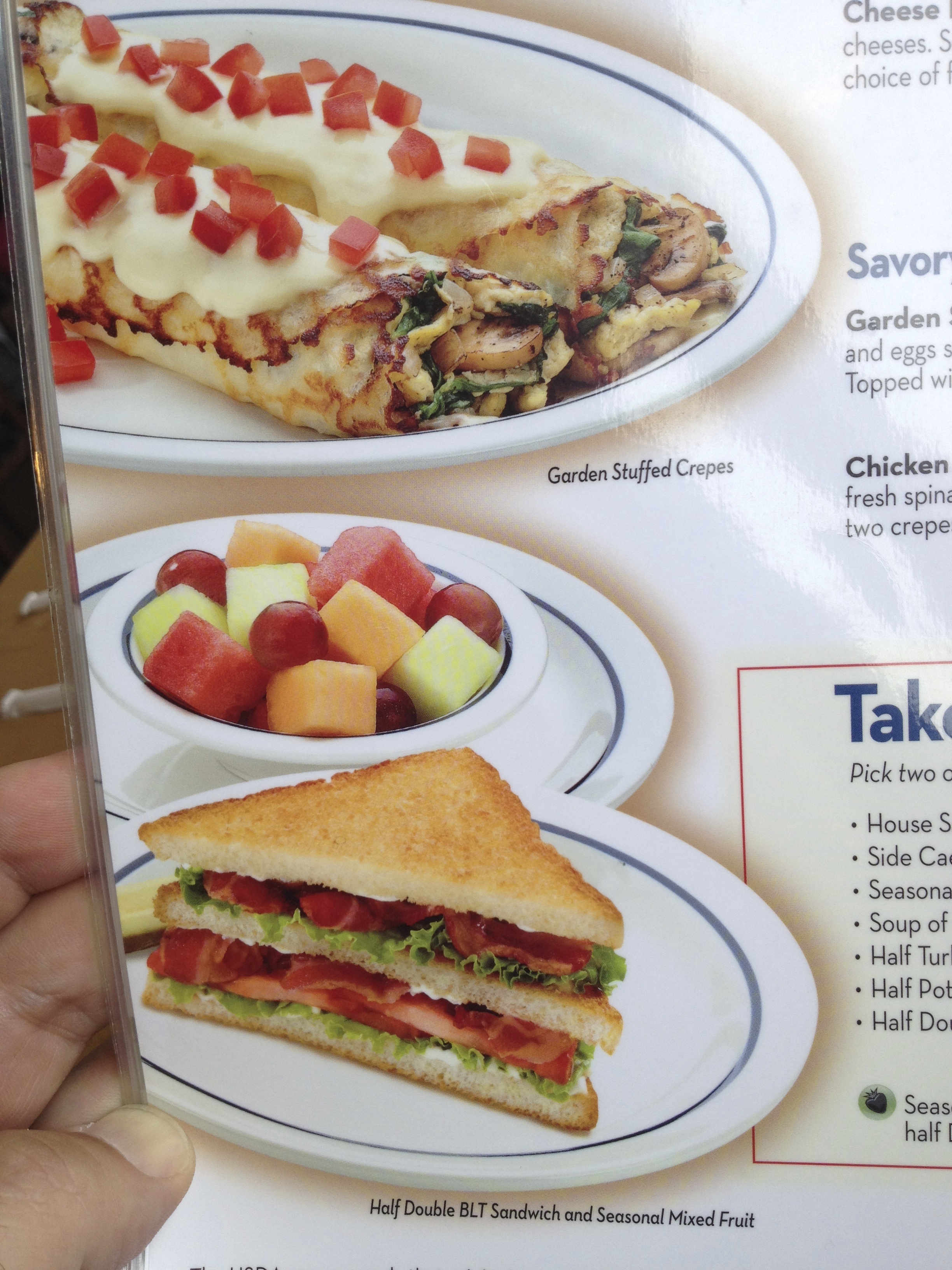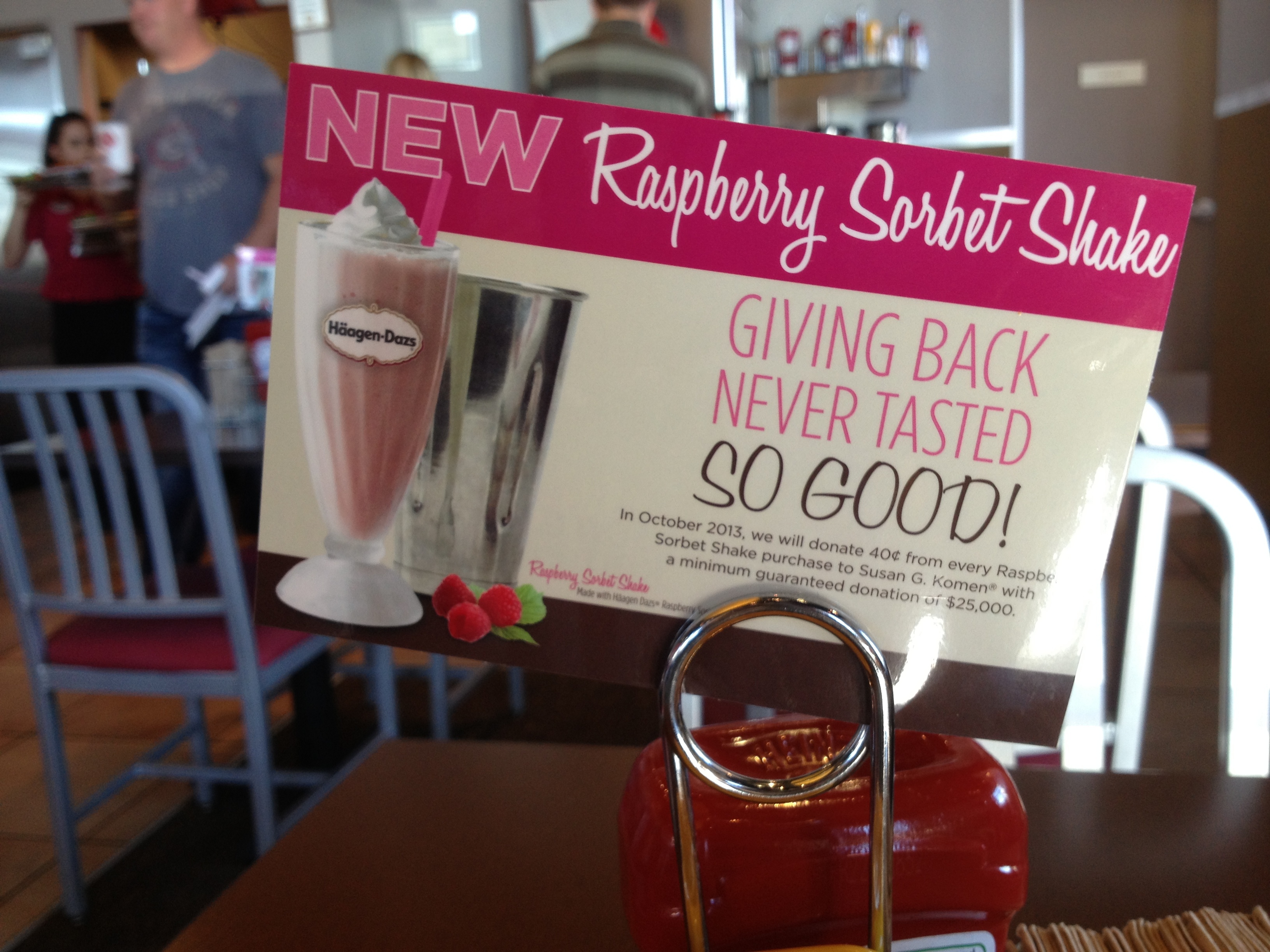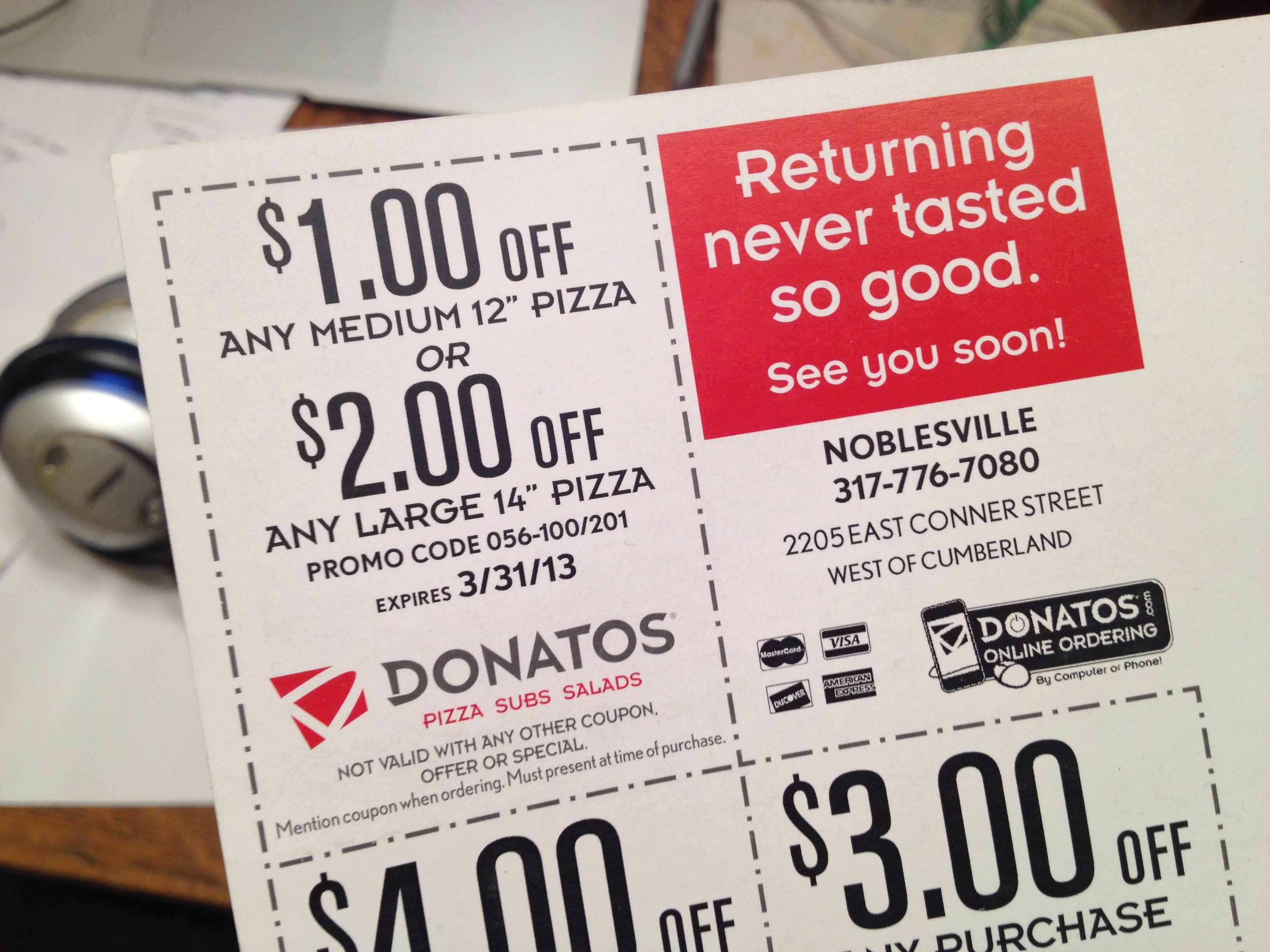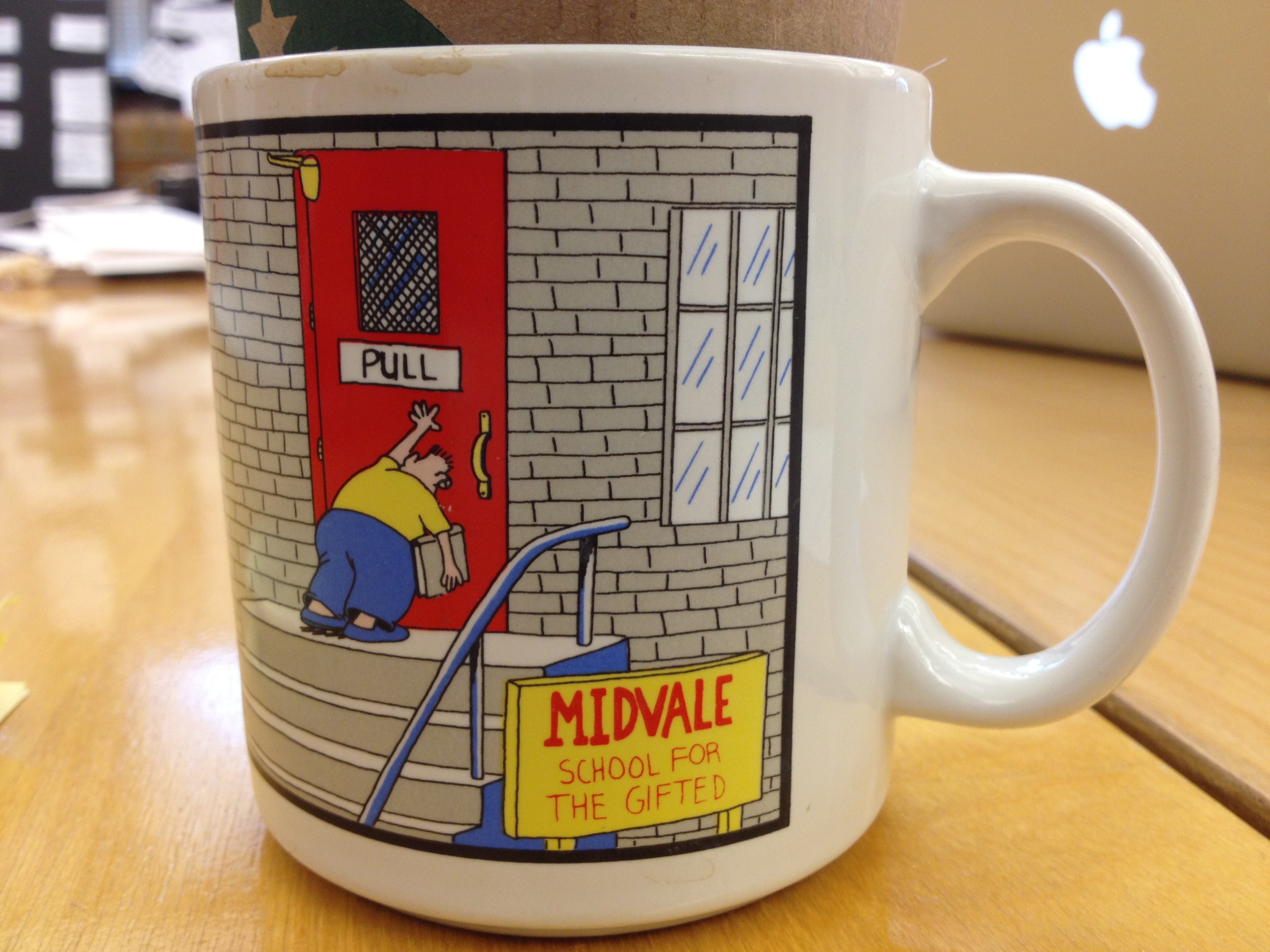All the money I’ve ever earned in my career, I earned as a writer. There have been variations on that theme, but that’s my background.
Now that doesn’t mean I don’t have advice on visual stuff. Like this IHOP menu photography.

My Quick Review: That’s too perfect. The edges of that toast have been meticulously groomed; the tomatoes on the crepes look machine-formed. I’ll grant them the haphazard browning on the crepes—that starts to feel authentic. But generally this food is too artificially styled. Food that activates our appetites is more natural, more realistic, more imperfect, more appealing to our “lizard brain,” which I discuss at length in the book, in Chapter 11, “Food Photography: People Are Visual First, Verbal Second.”
Having admitted that people are primarily visual, though, I hasten to comment on the verbal portions of the following photos because, in the end, the customer takes away an overall impression, a combination of word and visual.
1. Writing Never Sounded So Unnatural.
Let’s start with an easy one—a copywriting tic that a ton of writers have, which completely baffles me. Why do writers use this formula: “__[abstract quality associated with the product]___ never tasted so good”…? Is everyone honestly throwing back to the old Hostess slogan?

If we’re not referring to that, then where could it have come from? Because it’s not how humans talk. And it’s so weird that it’s entered our copywriting vocabulary: nobody would utter that speech pattern outside of a piece of promotional literature, and probably those who offer it as advertising-talk have no idea of its origin. I’ll bet this Smashburger writer was totally unaware of the old Hostess campaign.

What do you suppose giving back tastes like?
See, that’s the problem with deploying this trope and not even giving it a second thought. “Oh, that sounds like an ad, and allows us to work a quality—in this case ‘giving back’—into the awkwardly worded headline!” This gets out of hand so quickly. Donatos sent this to my house:

Is “Returning” a savory or sweet flavor? I would probably have guessed a vanilla kind of flavor but on a pizza coupon maybe it’s some kind of cheesy taste? ALL I AM ASKING IS THAT THE WRITER GO BACK AND THINK ABOUT WHAT THEY JUST SAID. That’s all I ask, in any of these cases.
2. People Are Ornery.
Nobody thinks what you want them to think just because you told them to think that.
So nobody who walks past this pizza joint believes this hype for one second:

Now, passersby probably also don’t think about it enough to hold it against the pizza joint; all this expensive door cling does is say, “Hi! I wasted some space pitching you with phony, thoughtless writing that you don’t believe and decent but generic-looking food photography, which sort of supports the idea that I am a total amateur.” In the end, maybe it makes a customer think that the proprietor is so bad at marketing he or she is probably really good at pizza-makin’. But purposefully presenting yourself as an ineffective marketer in the hopes of looking like a good place for pizza is a long way around the barn, a gamble, diabolically clever if it works, and a generally weird thing to do.
Also, relying on the old chestnut “Webster’s defines” was a lazy writing approach identified and discouraged by your high school English teachers, right? Do we have to go over that again?
3. People Don’t Read.
First, just accept that people really, really, really don’t read.
Hey, Starbucks customer with something to throw away: stop for a second and make a judgement call, okay? No? Are you listening, Starbucks customer?

No. Starbucks customer was not listening. The contents of the trash side and the recycling side are identical. Certainly calls to mind this old cartoon (this is a cup in the agency kitchen):

But if we accept that—if we all agree that even we, the sophisticated readers of the SellingEating.com blog, frequently push on pull doors and rarely read the copy blocks on the placemats and table cards of even the restaurants we’re associated with—then why would the following work?

I’m certain the idea was to provide a little information for the people standing in line waiting to order. This particular Noodles & Co. line does back up, and at lunch there’s plenty of time to read. The headline is loose and charming—maybe a little bit cloying, but that’s par for the course, unfortunately, in restaurant point-of-purchase materials. But three questions: (a) Why would I read this—I get that you’re asserting your Chipotle-like honesty and purity of essence, and the upper 6/7ths of the poster does a fine job. But do you really think I’m going to kneel down and read that long paragraph? Seriously? (b) What do you mean when you say this: “We are MADE. DIFFERENT.” I get the second of the double entendres, that you’re claiming your food is literally cooked differently. But what is the first meaning? You imply that the word “Differently” is a last-minute add-on and a separate sentence, so by that logic, we can infer you were originally intending to say, “We are MADE.” and just end it there. Is this a Mafia reference? Is this a euphemism for intimate relations? Is this a statement of the obvious? Yes, clearly, you are not naturally formed. THINK ABOUT IT. ALL I WANT YOU WRITERS TO DO IS THINK ABOUT WHAT YOU ARE TYPING. I am going to make my third question a point all by itself.
4. PLEASE STOP SAYING “REAL.”

I have been complaining about this for years.
Seriously.
Okay, I’m going to continue this tomorrow. This blog post has gotten long enough (or too long).
TO BE CONTINUED…


